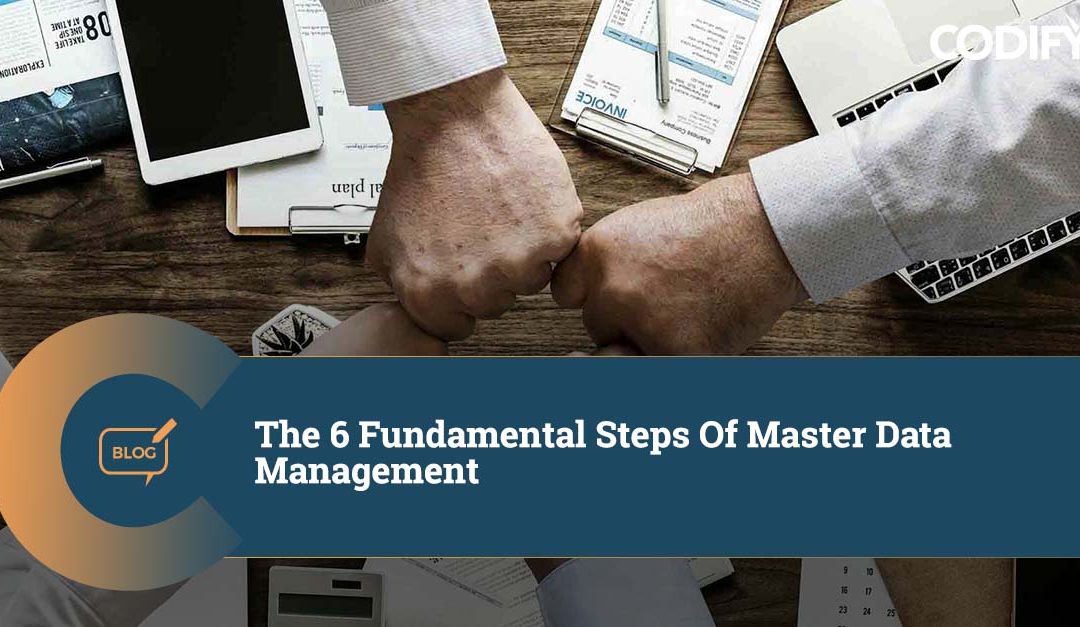With the growing importance of multiple digital and physical channels of operation, today’s businesses are faced with having to deal with a huge information management challenge. Reports say that 95% of all businesses confront the need to manage some form of unstructured data. Truckloads of data in various formats from across departments flow into the organizational technology stack every second.
As is apparent, acquiring the ability to apply analytics on this data is important to set the right direction for growth for any business. But a survey by MicroStrategy of 500+ analytics and business intelligence specialists showed that only 3% were able to get the data required for analytics in seconds, while 60% or more respondents needed hours or even days to get access to the right data.
That brings forth the question of how to best organize data to make it “usable” to derive analytical insights for various activities?
The solution lies in Master Data Management, MDM.
MDM is the comprehensive process of organizing, centralizing, and synchronizing data from disparate sources to provide accurate data assets to any enterprise function that requires it. It breaks down data silos so that chances of discrepancies or errors and miscalculations are eliminated when different systems access the data needed to derive and subsequently act on the insights. In simple terms, MDM is the set of techniques deployed to ensure that all parts of the business use the same accurate information for decision making.
So now that we know that MDM is a fundamental component for succeeding in the age of data, the next question is where to or how to start with an MDM implementation. Here are the 6 fundamental steps of a successful master data management strategy:
Research on solution providers
Your in-house technology team may require a huge overhaul if an MDM implementation is to take place. Often, the best choice may be to turn to a trusted MDM implementation vendor. An experienced MDM vendor can easily guide you on selecting the most optimal business cases for MDM, identify the changes your current processes will need, advise you on the best practices to be followed, handhold your internal teams as change sets in, and monitor the successful deployment of your MDM strategy. They need to be involved right from the start as their experience and knowledge will ensure that the MDM framework for your business works in the long run. An MDM managed service provider may be a great option to consider for an end-to-end solution.
Fortify data quality policies and processes
Enterprises stepping into MDM need to buy into the importance of achieving high standards of data quality. This calls for the constitution of robust data governance policies. Various business units will have to cultivate common standards for data definition, unified rules for validating quality, and universally aligned processes. Once this framework is in place, it will be easier to train staff to follow and adhere to it.
Collate Use Cases
Every department is different when it comes to the benefits they seek from data. What the sales team needs from customer data might be different from what the operations or marketing team needs. The data challenges would be different when you aim to make the onboarding of customers, partners, or vendors easier by leveraging MDM. Given the diversity of possible use cases, you will need to use the experience of your MDM partner to identify all the unique challenges and then create a custom MDM strategy that is right for you.
Create an implementation framework
Your MDM partner will have to create an implementation style that best fits your organization’s model and culture. Who owns the data is a foundational data stewardship question to answer. Answers to some key questions must be formulated in this stage:
- Who needs to have permission to access what in the Master Data?
- Should the MDM implementation be deployed on-premises or a managed service offering?
- What devices, platforms, and locations need to be strategically integrated into the MDM practice?
- Will the implementation be scalable to accommodate future growth?
- Who will be responsible for continuous support for the stakeholders requiring MDM in their digital plans?
Lastly, think of the circumstances under which you may need to upgrade the defined MDM strategy.
Garner support from leadership
As with all transformative efforts, support from the top management is vital for a successful MDM implementation. They need to believe that growth will be hampered without MDM and also be assured of the many benefits of MDM like:
- Elimination of silos
- An enhanced customer experience
- Improved operational efficiency
- Increased collaboration
- Easier regulatory compliance
This will make it easier to get the rest of the organization aligned behind the strategy apart from oiling gears of the implementation engine with budgets and resources.
Pilot a quick win project
Though MDM creates greater value when it is holistically applied across the organization, starting with a quick win on a suitable business function and then incrementally scaling it to other sections may prove easier to do. A tip for finding the right candidate for a pilot attempt would be to identify business stakeholders who have already understood how their operations are hampered by low data quality and focus on running a pilot program in MDM for them. This initiative will also help you gauge the capabilities of your MDM vendor. You will get the opportunity to rate how well your MDM partner can understand the nuances and workflows of your business and define a way forward.
As an enterprise, your data is now vital for every department to deliver great outcomes. MDM may be the first step on the strategic path to building a data-driven business for greater efficiency and customer focus. Following these 6 steps could help you build your own MDM success story.
